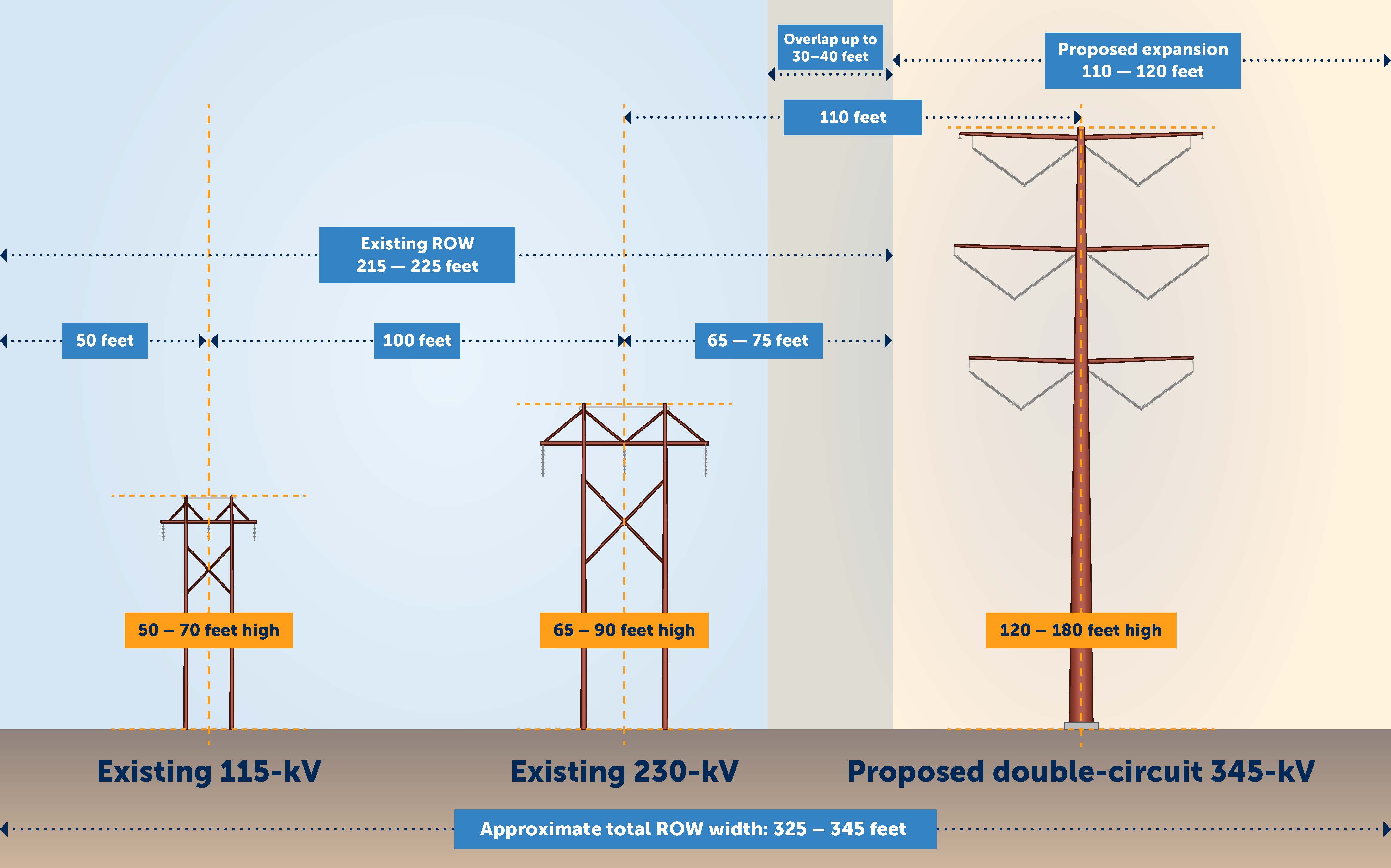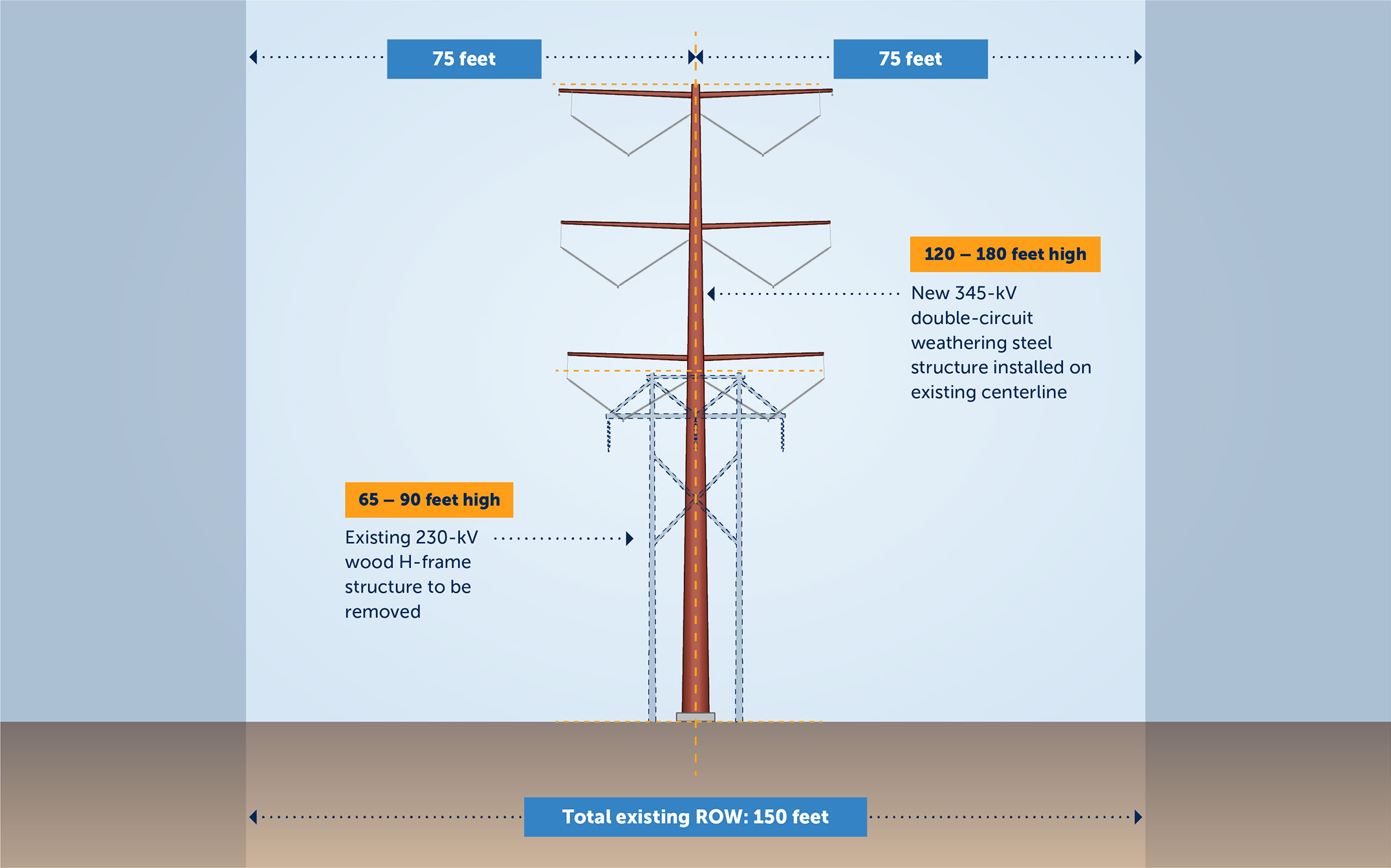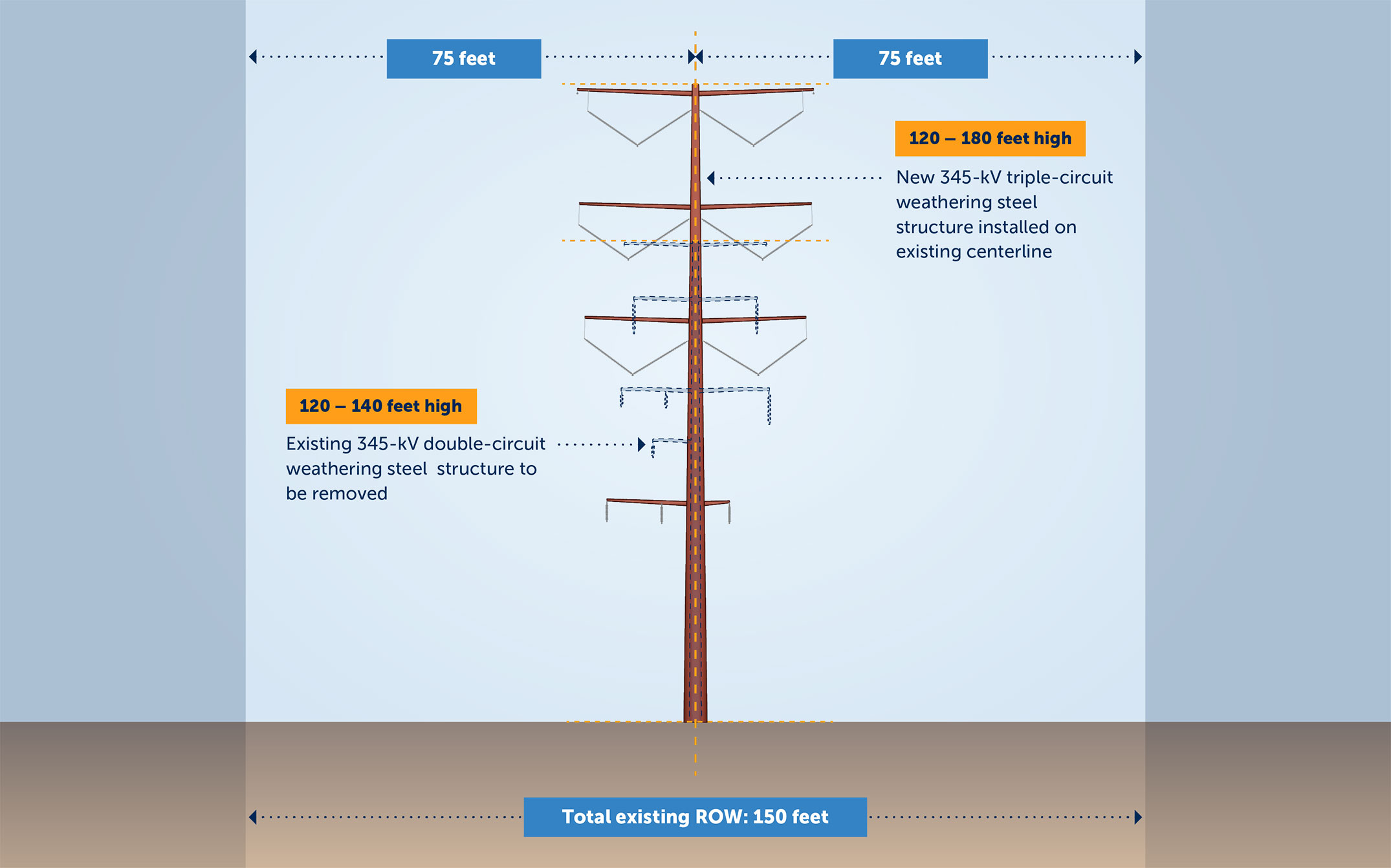Landowners
The project is intended to help maintain a reliable and resilient local and regional power grid as more renewable energy is brought online; existing power plants are retired; more homes and businesses shift to electricity to power appliances, equipment and heating and cooling systems; and more frequent extreme weather events occur. Construction began in fall 2025.
Land agent information
Landowners and residents with land involved in the right-of-way process have been and will continue to be contacted by our real estate team. Please reach out to the following land agents with any questions:
Matt Hagelin
763-445-5981
mhagelin@grenergy.com
Cody Dierks
218-269-9089
cody.dierks@jcgland.com
What landowners can expect
Northland Reliability Project representatives will contact impacted landowners and hold individual meetings to discuss the ROW process, including the need for temporary right-of-entry access, negotiation and acquisition of temporary and permanent land rights, and the restoration and damage process.
- Landowners are contacted to begin right-of-way acquisition process.
- An easement is presented to a landowner. An offer based on fair market value is presented.
- We work closely with the landowner to resolve concerns and reach an agreement. An easement is recorded.
- The utilities construct, operate and maintain the transmission line within the right-of-way.
Right-of-way needs near existing lines
There may be opportunities to overlap ROW with an existing line. We estimate up to 30-40 feet of ROW may be shared between the existing structure and the new structure depending on factors like engineering, construction and topography.
The typical ROW width will be at a minimum 150 feet for each transmission line (75 feet on each side of a transmission line). It is sometimes necessary to secure additional permanent ROW at angles or areas where we use specialty structures. It could also be necessary to secure temporary areas next to the permanent ROW for stringing and construction access.
Click images to enlarge.





